Counterinsurgency
Due to the age of publications, certain works listed are no longer in print. Print-on-demand services are available for some titles upon request.
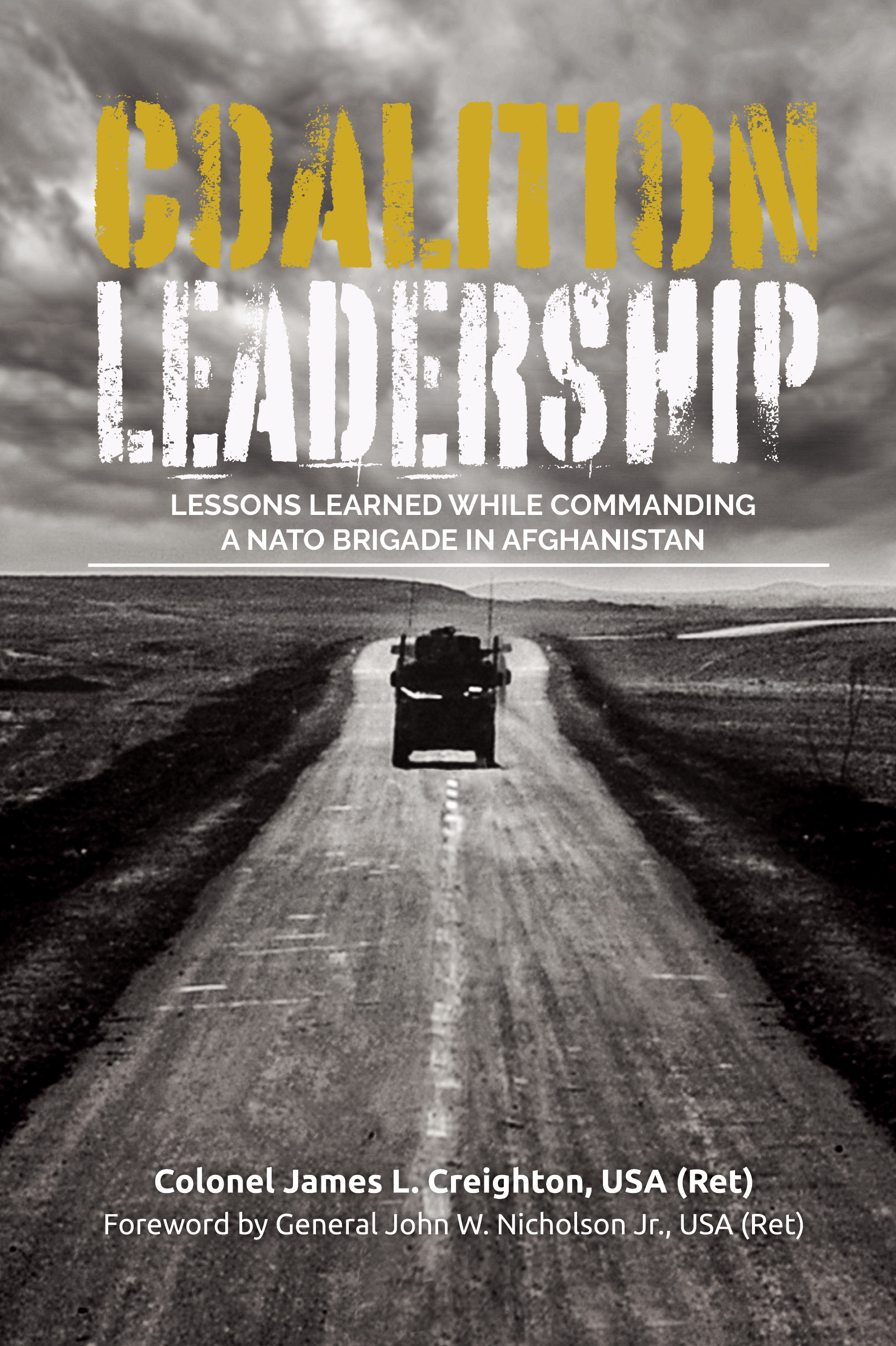 Coalition Leadership
Coalition Leadership
Lesson Learned while Commanding a NATO Brigade in Afghanistan
By Colonel James L. Creighton, USA (Ret)
Colonel Creighton’s command provides an excellent case study in the leadership of coalitions, which are critical to the United States now and in the future. The U.S. military’s mission in Afghanistan enjoyed significant legitimacy because it operated within a coalition that was based on international mandates from the United Nations and the North Atlantic Treaty Organization (NATO). These mandates enabled unity of purpose among the more than 50 nations that joined the Coalition and sustained that unity for more than 20 years.
 The Trillion Dollar War
The Trillion Dollar War
The U.S. Effort to Rebuild Afghanistan, 1999–2021
By Abid Amiri
What if the U.S. war on terror in Afghanistan was fought not by the military but by educating the Afghan youth, and what if the trillion dollars had been spent instead on economic development in Afghanistan rather than on bombs and fighter jets? The Trillion Dollar War helps explain the United States’ efforts to rebuild Afghanistan during the last 20 years. The book outlines the successes and failures of both Afghans and Americans in this endeavor. In addition, it provides an in-depth analysis of the cost of America’s longest war, and it asks whether spending more on education and infrastructure than on weapons of war would have resulted in a different outcome.
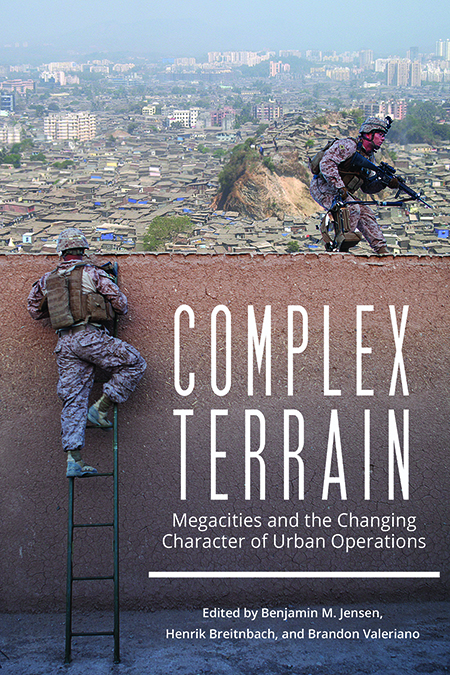 Complex Terrain
Complex Terrain
Megacities and the Changing Character of Urban Operations
Edited by Benjamin M. Jensen, Henrik Breitenbauch, and Brandon Valeriano
This edited volume, composed by military professionals in Gray Scholars Program at Marine Corps University, describes the changing character of urban operations. The pattern of human settlement and interaction is changing and the future is urban. Because the majority of the world's population lives within cities, the future of strategic competition and conflict reside there as well.
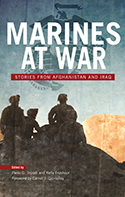 Marines at War
Marines at War
Stories from Afghanistan and Iraq
Edited by Paolo G. Tripodi and Kelly Frushour
This book brings together the short stories of 10 Marines and a sailor who served in either Afghanistan or Iraq, some in both. The authors reflect on their time in combat, focusing on preparation, particular moments, and the lessons or conclusions drawn from their experiences. While every servicemember has a different story, and despite these remembrances being very personal, this collection represents and provides insight into the ordinary experiences of fellow Americans serving during an extraordinary set of circumstances.
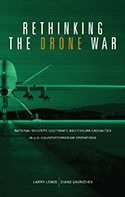 Rethinking the Drone War
Rethinking the Drone War
National Security, Legitimacy, and Civilian Casualties in U.S. Counterterrorism Operations
By Larry Lewis and Diane Vavrichek
This volume provides concrete recommendations for policy makers as well as military commanders, a number of which have, since the time of its writing, been incorporated into the recent U.S. policy guidelines related to civilian casualties. Although this volume focuses specifically on current counterterrorism practices, its analysis, frameworks, and conclusions can be applied in varying degrees to emerging technologies as well. These considerations can help a government ensure that its use of force is not only effective, but also responsible and consonant with its larger interests.
 Al-Qaida, the Tribes, and the Government
Al-Qaida, the Tribes, and the Government
Lessons and Prospects for Iraq's Unstable Triangle
By Norman Cigar
This study examines Al-Qaida’s experience dealing with the tribes in Iraq in terms of a triangular relationship involving the Sunni tribes, Al-Qaida, and the government (or the United States as the governing authority in the initial stages), with latter two entities often competing for the allegiance of the tribes.
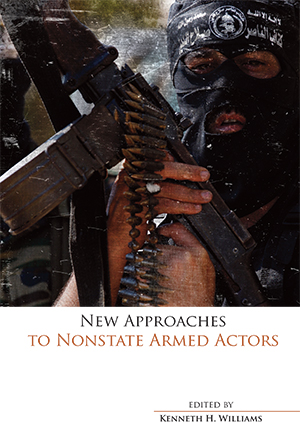 New Approaches to Nonstate Armed Actors
New Approaches to Nonstate Armed Actors
Edited by Kenneth H. Williams
For as long as governments have existed, groups have been forming to oppose them. The twenty-first century has brought newly emerging insurgent or terrorist groups that are often more sophisticated than their predecessors. New Approaches to Nonstate Armed Actors presents leading experts in the field discussing the challenges associated with confronting such groups, including engagement, negotiation, de-radicalization, and intervention. Organizations addressed range from current operations such as Hezbollah, Hamas, al-Qaeda, the Taliban, and Mexican drug cartels to groups like the Irish Republican Army that are now a part of history. In addition to the presentations below, the book also includes a panel discussion with the participants moderated by Roger Hardy.
 Rethinking a Middle East in Transition
Rethinking a Middle East in Transition
Edited by Kenneth H. Williams
Rethinking a Middle East in Transition presents the opinions of an array of experts on the region, drawn from their presentations at the Middle East Institute’s 64th Annual Conference in November 2010, on the eve of the Jasmine Revolution. Participants came from across the spectrum—diplomats, policy specialists, academic scholars, military planners, and journalists. Topics addressed include the Arab–Israeli peace process; Iran and its role in the region; the challenges of the ongoing conflict in Afghanistan and Pakistan; the difficulties of confronting and negotiating with nonstate actors such as Hezbollah, al-Qaeda, and the Taliban; public opinion in the Arab world; Turkey’s growing influence; Israel’s perspectives on recent developments; conditions in Iraq as the United States withdraws its forces; and the Obama ad- ministration’s policies in response to all of these issues.
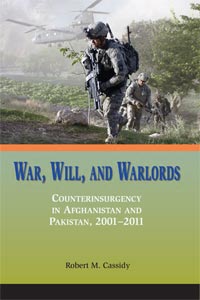 War, Will, and Warlords
War, Will, and Warlords
Counterinsurgency in Afghanistan and Pakistan
By Robert M. Cassidy
This book lies at the intersection of international security studies, military strategy, and the operational art of counterinsurgency. For conventional militaries to be successful in counterinsurgency and irregular warfare, they must adapt their means and methods to meet the exigencies of a range of lethal and nonlethal actions and activities. In addition, the methods of Coalition partners should generally be collaborative, designed to adequately implement the principles and tenets of counterinsurgency in complementary ways. This book identifies best and worst practices in both counterinsurgency and counterterrorism operations in Pakistan and Afghanistan with the aim of crafting recommendations for more effective counterinsurgency. By analyzing this particularly complex challenge from both sides of the border, this work provides explanations for the ostensibly lamentable performances in Afghanistan and Pakistan up to 2009. A better understanding of the success or failure in how the United States, along with its partners, adapts to meet the exigencies of the dual Taliban insurgencies among the Pashtun populations on both sides of the Durand Line will point to recommendations for improving performance and increase our opportunities for ultimate success.
 Al-Qaida after Ten Years of War
Al-Qaida after Ten Years of War
A Global Perspective of Successes, Failures, and Prospects
By Norman Cigar and Stephanie Kramer
The papers that follow are the proceedings of the Marine Corps University conference “Al-Qaida after Ten Years of War: A Global Perspective of Successes, Failures, and Prospects.” Our intent in holding this conference was to comprehend the multidimensional aspects of Al-Qaida’s threat in various theaters where it has operated over the past decade since the events of 11 September 2001, or where it may still do so in the future. We sought a net assessment of what Al-Qaida has done successfully and where it has failed in different parts of the world in order to develop a better understanding of how to deal more effectively with the challenge that Al-Qaida still poses for international security.
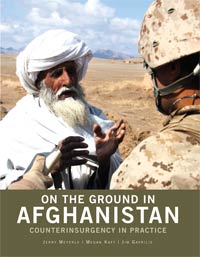 On the Ground in Afghanistan
On the Ground in Afghanistan
Counterinsurgency in Practice
By Jerry Meyerle, Megan Katt, and Jim Gavrilis
The purpose of this book is to shed light on what small military units did in different parts of Afghanistan from the earliest years of the insurgency in 2003 to the surge of U.S. forces in 2009. It is, in part, a collection of their experiences. It describes the varying conditions faced by small units in remote areas, how they responded to these conditions, what worked, and what did not. This is not a book about policy, strategy, or national politics in Afghanistan, nor is it a book about counterinsurgency theory. Many others have written on these topics. The focus of this book is on small-unit counterinsurgency tactics and local-level politics.
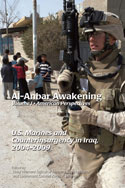 Al-Anbar Awakening
Al-Anbar Awakening
Volume I, American Perspectives
U.S. Marines and Counterinsurgency in Iraq, 2004-2009
By Chief Warrant Officer-4 Timothy S. McWilliams and Lieutenant Colonel Kurtis P. Wheeler
This two-volume anthology of interviews tells the story of the al-Anbar Awakening and the emergence of al-Anbar Province from the throes of insurgency. It presents the perspectives of both Iraqis (volume two) and Americans (volume one) who ultimately came to work together, in an unlikely alliance of former adversaries, for the stabilization and redevelopment of the province. The collection begins in the 2003-2004 time frame with the rise of the insurgency and concludes with observations from the vantage point of early to-mid 2009.The anthology demonstrates that there is not one history of the Awakening, but several histories intertwined. It is not a complete collection, but one that provides a broad spectrum of candid, unvarnished perspectives from some of the leading players.
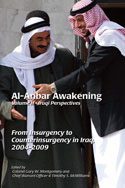 Al-Anbar Awakening
Al-Anbar Awakening
Volume II, Iraqi Perspectives
U.S. Marines and Counterinsurgency in Iraq, 2004-2009
By Colonel Gary W. Montgomery and Chief Warrant Officer-4 Timothy S. McWilliams
This two-volume anthology of interviews tells the story of the al-Anbar Awakening and the emergence of al-Anbar Province from the throes of insurgency. It presents the perspectives of both Iraqis (volume two) and Americans (volume one) who ultimately came to work together, in an unlikely alliance of former adversaries, for the stabilization and redevelopment of the province. The collection begins in the 2003-2004 time frame with the rise of the insurgency and concludes with observations from the vantage point of early to-mid 2009.The anthology demonstrates that there is not one history of the Awakening, but several histories intertwined. It is not a complete collection, but one that provides a broad spectrum of candid, unvarnished perspectives from some of the leading players.
 Saddam Hussein's Nuclear Vision
Saddam Hussein's Nuclear Vision
An Atomic Shield and Sword for Conquest
By Norman L. Cigar
This study examines why Saddam Hussein pursued nuclear weapons and, as a basic aspect of that question, how he might have employed that capability had he acquired it, whether for deterrence, warfighting, or something else. As the key decision maker in Iraq, Saddam's own thinking was central. His perception of regional threats, primarily from Iran and Israel, were a prime motivator. In addition, Saddam viewed acquiring nuclear weapons as a potent vehicle to help legitimize his regime and burnish his personal image as leader both at home and in the Arab World, as a modernizer and defender of national interests. A better understanding of the Iraqi case can also clarify the enduring issues related to how regional leaders may view nuclear weapons in this world of looming proliferation.
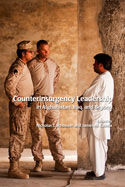 Counterinsurgency Leadership in Afghanistan, Iraq, and Beyond
Counterinsurgency Leadership in Afghanistan, Iraq, and Beyond
By Nicholas J. Schlosser and James M. Caiella
This volume collects the works presented at the 2009 symposium “Counterinsurgency Leadership in Afghanistan, Iraq, and Beyond.” This one-day colloquium was cohosted by the Marine Corps University and the Marine Corps University Foundation and held at the National Press Club in Washington, DC.